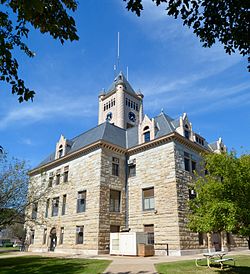Mercer County, Illinois | |
|---|---|
 | |
 Location within the U.S. state of Illinois | |
 Illinois's location within the U.S. | |
| Coordinates: 41°12′N90°44′W / 41.2°N 90.74°W | |
| Country | |
| State | |
| Founded | January 13, 1825 |
| Named after | Hugh Mercer |
| Seat | Aledo |
| Largest city | Aledo |
| Area | |
• Total | 569 sq mi (1,470 km2) |
| • Land | 561 sq mi (1,450 km2) |
| • Water | 7.5 sq mi (19 km2) 1.3% |
| Population (2020) | |
• Total | 15,699 |
• Estimate (2024) | 15,292 |
| • Density | 28.0/sq mi (10.8/km2) |
| Time zone | UTC−6 (Central) |
| • Summer (DST) | UTC−5 (CDT) |
| Congressional districts | 15th, 17th |
| Website | www |
Mercer County is a county in Illinois. According to the 2020 census, it had a population of 15,699. [2] Its county seat is Aledo. [3] Mercer County is included in the Davenport-Moline-Rock Island, IA-IL Metropolitan Statistical Area. [4]


